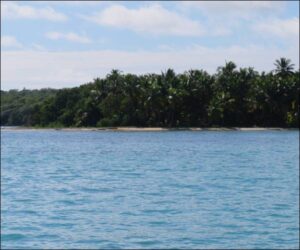On my recent trip to the Dominican Republic, I took a boat trip to Saona Island at the DR’s southeastern tip, the site of several events depicted in my books. The historic Taíno name for the island was Adamanay, and its local chieftains likely were vassal to the chieftain that ruled Higüey, the Taíno chiefdom on the mainland encompassing the DR’s easternmost coast.
In 1494, as related in Columbus and Caonabó, Columbus harbored for over a week in the protected strait between Adamanay and the mainland, seeking shelter from a hurricane while circling “Española” on return from his Cuban exploration. He then named Adamanay “La Bella Saonese”—or simply Saona—for the hometown of his companion Michele da Cuneo, native to Savona, Italy (nearby Genoa), who had participated on the exploration. As depicted in Encounters Unforeseen, Columbus had resided in Savona for a few years when a teenager. Cuneo is perhaps best known for bragging about his rape of an indigenous women on Ayay (St. Croix) in November 1493 (see post of November 14, 2021, at andrewrowen.com/st-croix/ ).
After Santo Domingo’s establishment (1496), Adamanay’s chieftains agreed to supply the town with cazabi baked from yucca then grown on Adamanay, likely in return for being spared conquest and afforded peaceful coexistence. As the next sequel will portray, that understanding was ruptured in early 1502 when a Spanish attack dog killed an Adamanay cacique supervising the loading of cazabi onto a caravel. The murder would trigger the Higüeyan warrior Cotubanamá’s decision to massacre a few Spaniards thereafter visiting Adamanay. That massacre would in turn provide an excuse for Columbus’s successor Nicolás de Ovando to invade Higüey in 1503.
In July 1502, when the fleet bearing Ovando to Española sailed to return to Spain, a hurricane struck while the ships were rounding the coast of Higüey. Although most ships sunk, some survived—perhaps a few in the shelter of the same strait where Columbus previously had sheltered.
The first photo shows the strait between the DR mainland and Saona (on the right), and the second is me with the boat’s captain, Luis Carlos Lopez Sanchez, and mate, Hector Rodolfo Contreras Castro. In Luis’s and Hector’s opinion, the best place for a sailing ship to harbor for shelter from a hurricane arriving from the east would be inside the strait at Saona’s western tip, shown at a distance in the third photo and closer in the fourth.
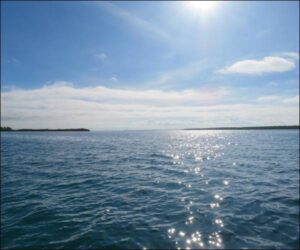
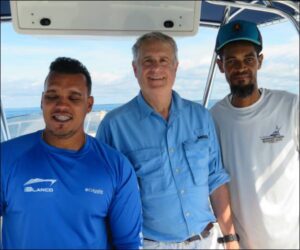
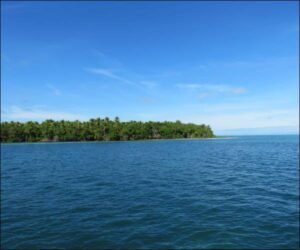
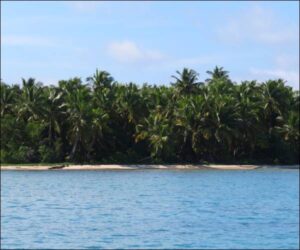
Modern Saona is known as tourist site for swimming and diving, yucca isn’t farmed there, and the site of the cacique’s murder is unknown. The beach at the western tip shown in the fourth photo is a logical place where a caravel arriving from Santo Domingo might anchor to load cazabi. That beach also extends along Saona’s western shore, as shown in the last photo, where there are other logical sites.
